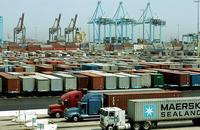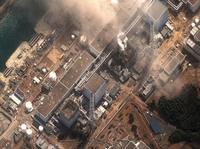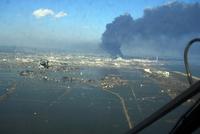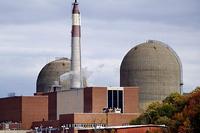-
Exigent helps Navy hospital monitor radiation
Last week Exigent Security Products announced that it will supply a large amount of radiation detection systems to the National Naval Medical Center in Bethesda, Maryland; the latest shipment is the third order from the Navy medical center and is for the company’s Radiation Detection Area Monitors which will be used to monitor radioactive materials used to treat patients
-
-
Japanese firms purchase radiation detection devices
Universal Detection Technology (UNDT) recently announced that it has shipped radiation detection devices to companies across Japan including those in heavy industries, telecommunications, and electronics; according to UNDT, Japanese companies have been purchasing a range of devices including dosimeter systems to measure cumulative radiation exposure and advanced survey meters and surface monitors that detect the amount of contamination on surfaces
-
-
Researchers use gamma rays to detect hidden nuclear threats
Researchers are currently exploring methods to use gamma rays to develop more powerful nuclear detection devices that can penetrate lead or other thick containers; scientists have created “MEGa-rays” by using fast-moving electrons to convert laser photons into the gamma part of the spectrum; these MEGa-rays are then tuned to a specific energy frequency so that they will only react with a certain type of material like uranium-235 which is used in nuclear fuel; scientists expect that the technology will be developed within the next several years
-
-
Smiths Detection launches new radiation detector; president steps down
Last week Smiths Detection unveiled its new hand-held radiation detection device that is capable of more accurately identifying radiological and nuclear threats; the “RadSeeker” is designed to have a wide-range of applications to enable security officials and first responders to detect nuclear threats in addition to scanning cargo for nuclear material; the president of Smiths Group, Smiths Detection’s parent company, announced that he would step down; his decision is a result of weak sales at Smiths Detection
-
-
Dynasil wins DHS award for radiation detection
Dynasil Corporation’s research division, Radiation Monitoring Devices, Inc. (RMD), was recently named DHS’ small business winner for radiation and nuclear detection for 2011; the award is meant to honor small businesses that are excelling in innovative achievement and demonstrate a commitment to national security; RMD was recognized particularly for its development of two new radiation detection materials, strontium iodide and CLYC crystals; DHS is especially keen to develop these new radiation detection materials as the current industry standard, helium-3, is suffering from major shortages
-
-
Gamma rays search for concealed nuclear threats
Gamma rays are the most energetic type of light wave and can penetrate through lead and other thick containers; in the last couple of years, MEGa-ray prototypes have identified elements like lithium and lead hidden behind metal barriers; the next generation of MEGa-ray machines, which should come on-line in a couple of years, will be a million times brighter, allowing them to see through thick materials to locate specific targets in less than a second
-
-
Global nuclear bomb sensors used to track Japan's radiation
A worldwide network of radiation sensors originally built to detect nuclear weapon tests is now being used by scientists to track radiation leaked from Japan’s Fukushima Daiichi nuclear power plant; over 280 sensors were installed to detect radiation from nuclear weapons testing; the sensors have detected several radioactive elements that are the byproducts of nuclear fission like iodine-131 and cesium-137 from Japan; experts studying the data disagree on the effect and size of the release, but assure the public that the effects are minimal as much of the radiation is being scattered across the Pacific
-
-
Half of EPA's radiation warning system in California defective
The defective sensors are part of EPA’s RadNet detection system which was created to provide an active warning system that would alert scientists and public health officials of any elevated levels of radiation so they can warn the public or take other protective measures; half of California’s twelve sensors have been sending data with “anomalies” to the EPA’s main laboratory; the faulty data results in delays of up to several hours; officials say that the sensors are fully functional and that the delays are a result of “glitches” in satellite transmissions; there are several other radiation sensors in the United States operated by local, state, and federal agencies
-
-
Washington nuclear sensors capable of detecting faintest amounts of radiation
The radiation detectors developed by the Pacific Northwest National Laboratory (PNNL) in Washington are so sensitive that they can detect trace amounts of radioactive material from hundreds of thousands of miles away; far from being a public health concern, the amount of radiation from Japan detected on the west coast of the United States was far less than what individuals receive from natural sources and is testament to the sensors extraordinary sensitivity; officials say that the PNNL’s sensors are a hundred times more sensitive than other radiation sensors; the PNNL facility is capable of picking up the faintest amounts of radioactive elements produced by nuclear reactions from the vast amounts of air particles in the world
-
-
Authors suggest ways to alleviate L.A. cargo port "constipation"

In January, the port of Los Angeles received more than 330,000 containers; the possibility that one of those 330,000 containers could have contained a dirty bomb, or worse, keeps security experts up at night; experts say that to ensure security and prevent logjams, the best approach to container security would be to replace the current system, which singles out only those containers whose documentation raises questions, with a system which will see terminal operators X-ray every container, regardless of its eventual destination; only those containers flagged during the low-level scan would be subjected to a more thorough search
-
-
Japan's nuclear crisis increasingly dire

Japan’s ongoing nuclear saga took a decided turn for the worse on Tuesday when a third explosion at a nuclear reactor may have cracked the containment unit protecting it, causing large amounts of radiation to leak out; the government requested assistance from the IAEA on Tuesday and teams were dispatched to help monitor radiation and human health; citizens within a thirteen mile radius of the Fukushima Daiichi power plant were evacuated and 140,000 residents within a twenty mile radius have been advised to stay indoors; officials also established a twenty mile no-fly zone around the power plant; officials in Tokyo reported that radiation levels were ten times their normal levels; experts say that these increased exposure levels do not pose an immediate threat to people, but the long-term effect remains unknown; the Tokyo Electric Power Company is considering using helicopters to pour cold water on top of overheating rooftops covering spent fuel rods; a small crew of fifty technicians at the badly damaged power plant is bravely fighting through high radiation levels and fires to contain the three reactors
-
-
Official: U.S. safe from Japanese radiation

U.S nuclear officials said that there was very little chance that harmful levels of radiation from Japan’s nuclear reactors would reach Hawaii or the west coast of the United States; the head of the Nuclear Regulatory Commission (NRC) also said nuclear plants in the United States were designed to withstand natural disasters like earthquakes and tsunamis; readings from radiation sensors placed on the west coast have not detected any increases in radiation levels and experts do not expect any increases; Japanese utilities have flooded two nuclear reactors with sea water in a desperate attempt to cool them down and prevent a meltdown; the NRC has dispatched two nuclear experts to Japan to assist with efforts to keep three damaged reactors from melting down
-
-
Future of U.S. nuclear plans uncertain after Japanese nuclear crisis

As Japan continues its struggle to control its nuclear reactors, the future of the U.S. nuclear industry has become increasingly uncertain; nuclear power had emerged as the bipartisan solution to easing America’s dependency on oil; in February 2010, President Obama announced $8.3 billion in loan guarantees to energy companies to build the first new nuclear power plants in the United States in almost thirty years; some lawmakers have called for a moratorium and stricter safety regulations, while others are urging for a more measured response; Energy Secretary Stephen Chu and Gregory B. Jaczko, the chairman of the Nuclear Regulatory Commission, will testify before the House Energy and Commerce committee on Wednesday
-
-
New technology allows detection of nuclear materials from a mile away
New detection technology would allow illicit nuclear material to be detected from up to a mile away; the technology, developed by the Idaho National Laboratory, will help protect the United States against the smuggling of nuclear materials into the country; field tests will begin this summer
-
-
Radioactive waste contaminates drinking water, EPA does nothing

Recent Environmental Protection Agency (EPA) documents show that Pennsylvania’s drinking water has been contaminated with radioactive waste from natural gas drilling; energy companies have been extracting natural gas with a new drilling technique called “hydrofracking”; this process results in millions of gallons of wastewater that is contaminated with dangerous chemicals like highly corrosive salts, carcinogens, and radioactive elements; EPA documents reveal the process has been contaminating drinking water supplies across the country with radioactive waste; in Pennsylvania more than 1.3 billion gallons of radioactive wastewater was trucked to plants that could not process out the toxins before it released the water into drinking supplies
-
- All
- Regional
- Water
- Biometrics
- Borders/Immig
- Business
- Cybersecurity
- Detection
- Disasters
- Government
- Infrastructure
- International
- Public health
- Public Safety
- Communication interoperabillity
- Emergency services
- Emergency medical services
- Fire
- First response
- IEDs
- Law Enforcement
- Law Enforcement Technology
- Military technology
- Nonlethal weapons
- Nuclear weapons
- Personal protection equipment
- Police
- Notification /alert systems
- Situational awareness
- Weapons systems
- Sci-Tech
- Sector Reports
- Surveillance
- Transportation
Advertising & Marketing: advertise@newswirepubs.com
Editorial: editor@newswirepubs.com
General: info@newswirepubs.com
2010-2011 © News Wire Publications, LLC News Wire Publications, LLC
220 Old Country Road | Suite 200 | Mineola | New York | 11501
Permissions and Policies
Editorial: editor@newswirepubs.com
General: info@newswirepubs.com
2010-2011 © News Wire Publications, LLC News Wire Publications, LLC
220 Old Country Road | Suite 200 | Mineola | New York | 11501
Permissions and Policies
